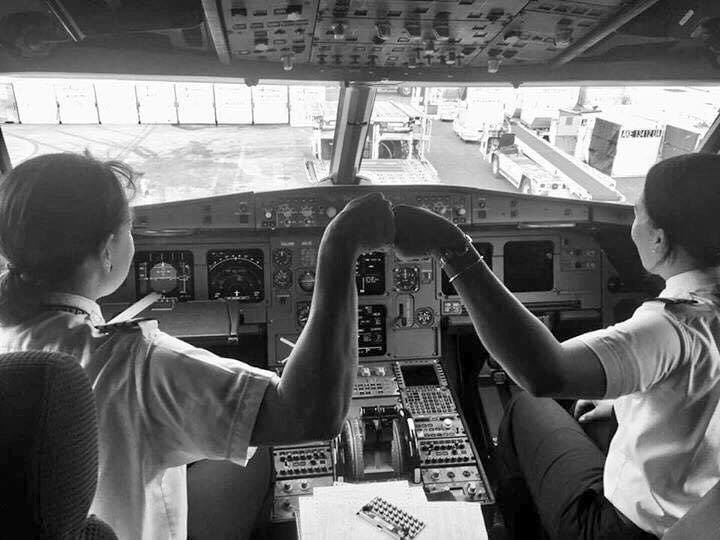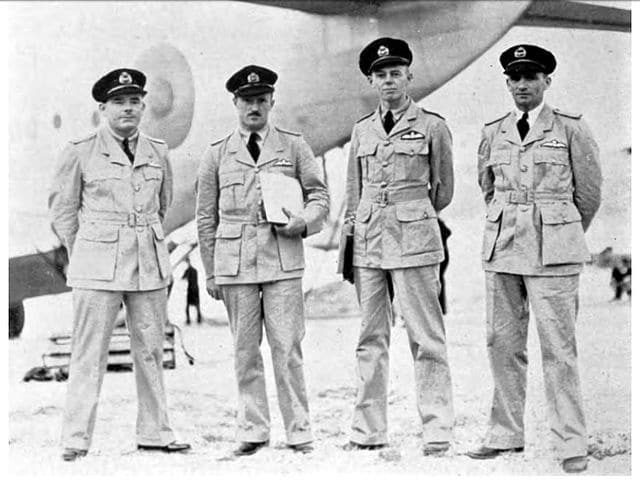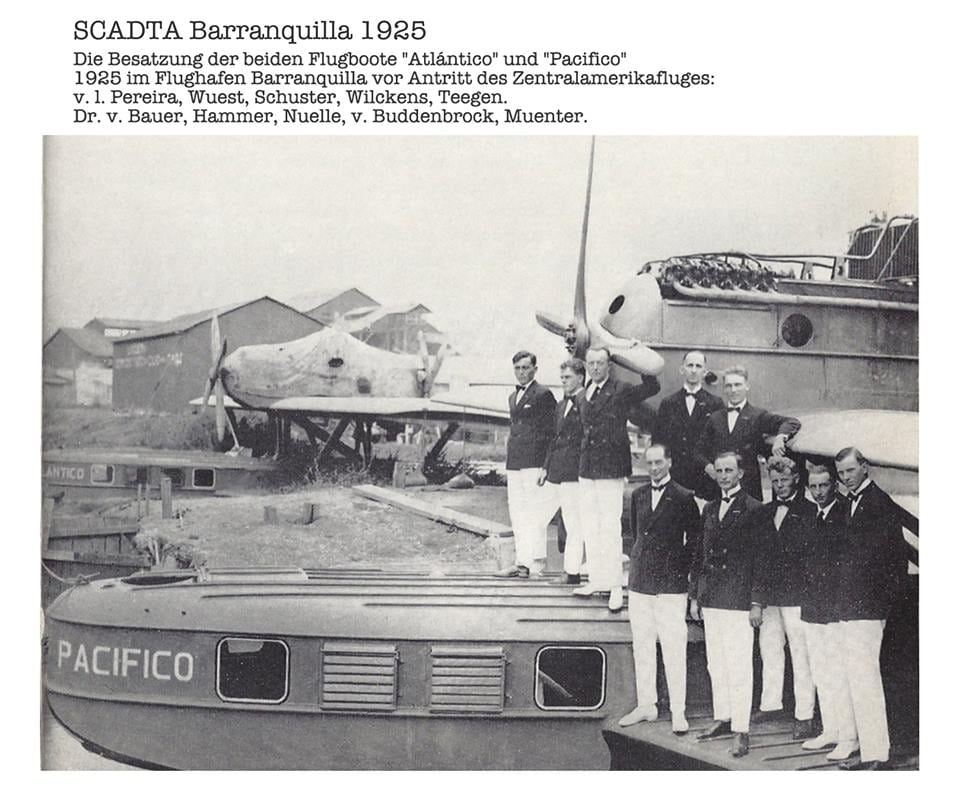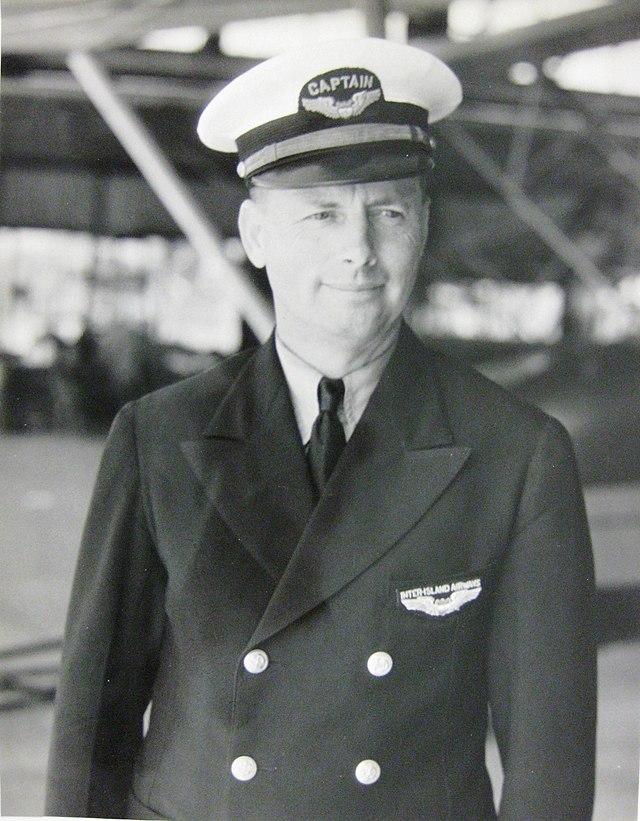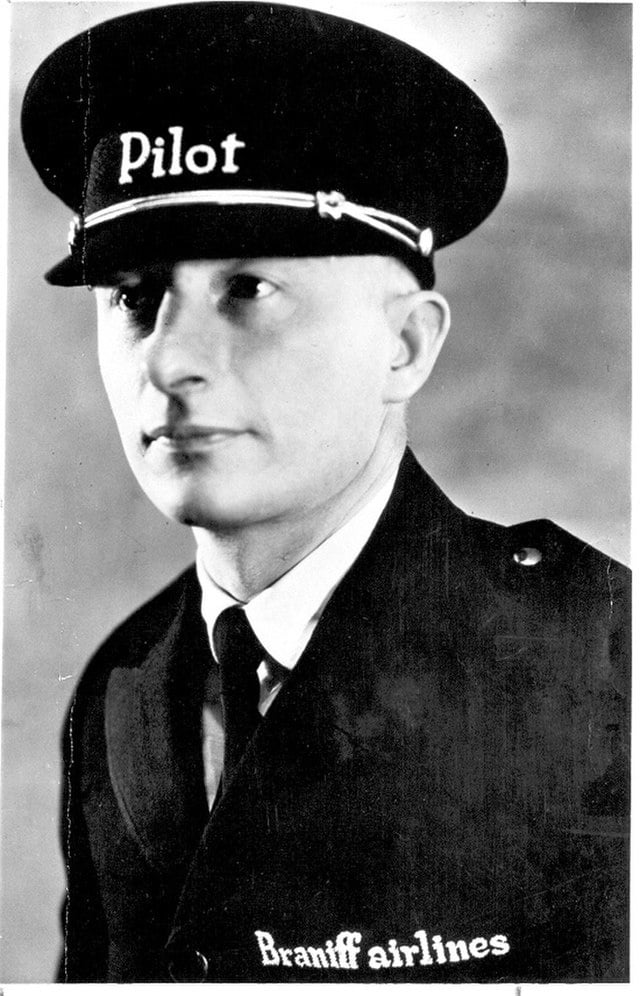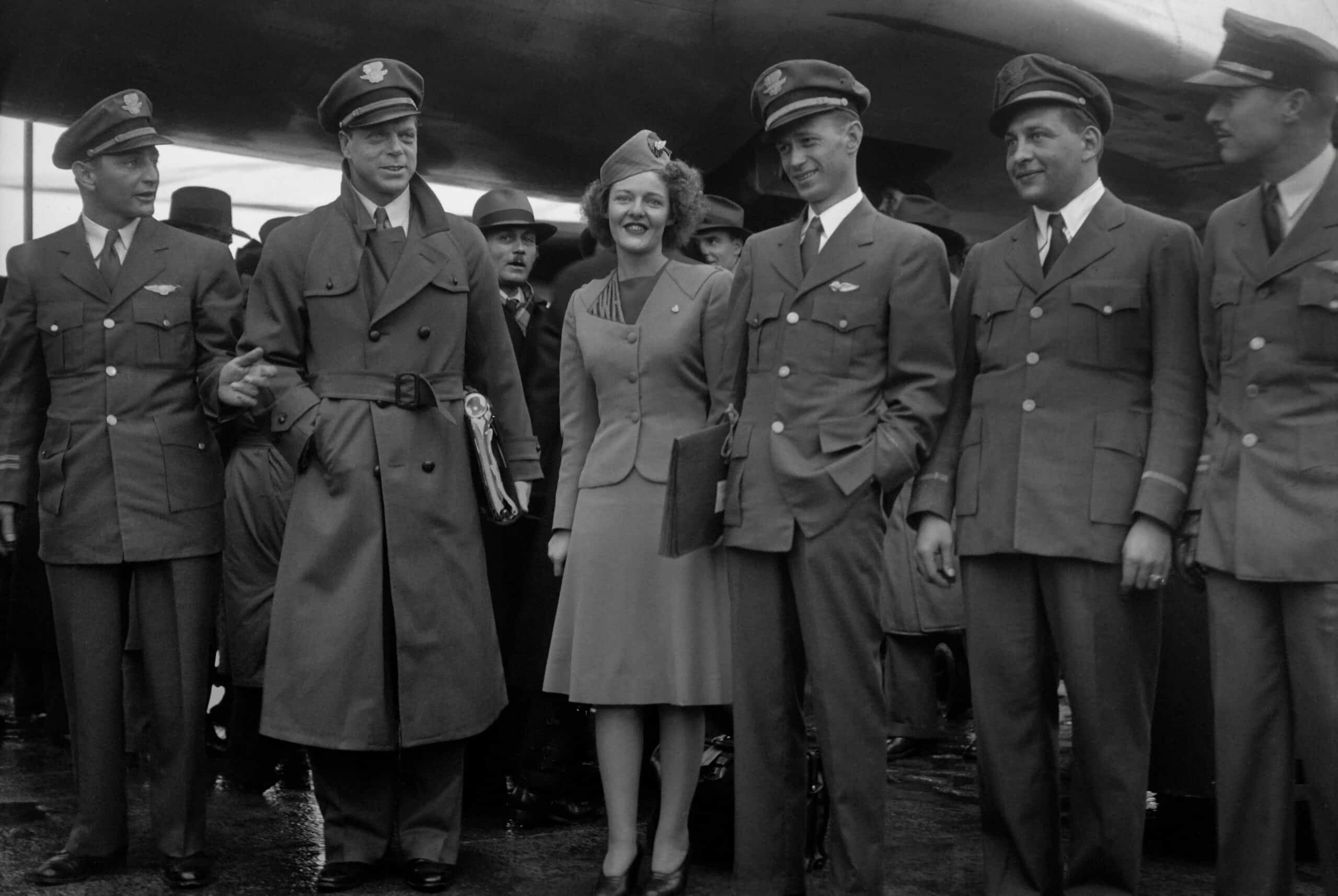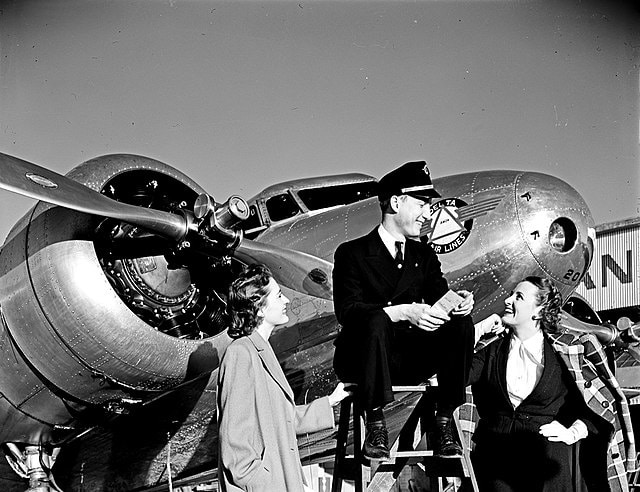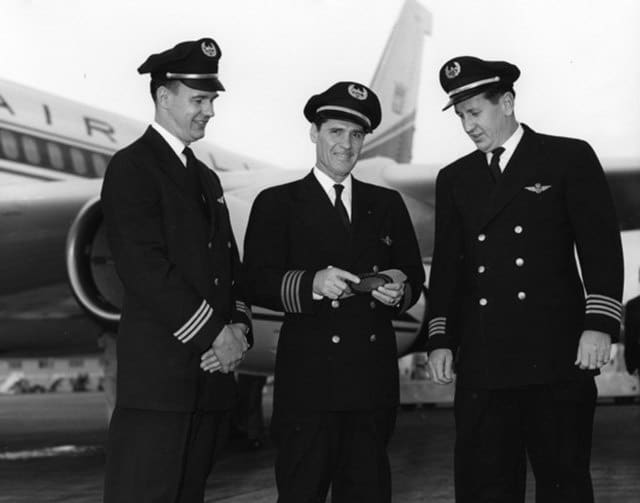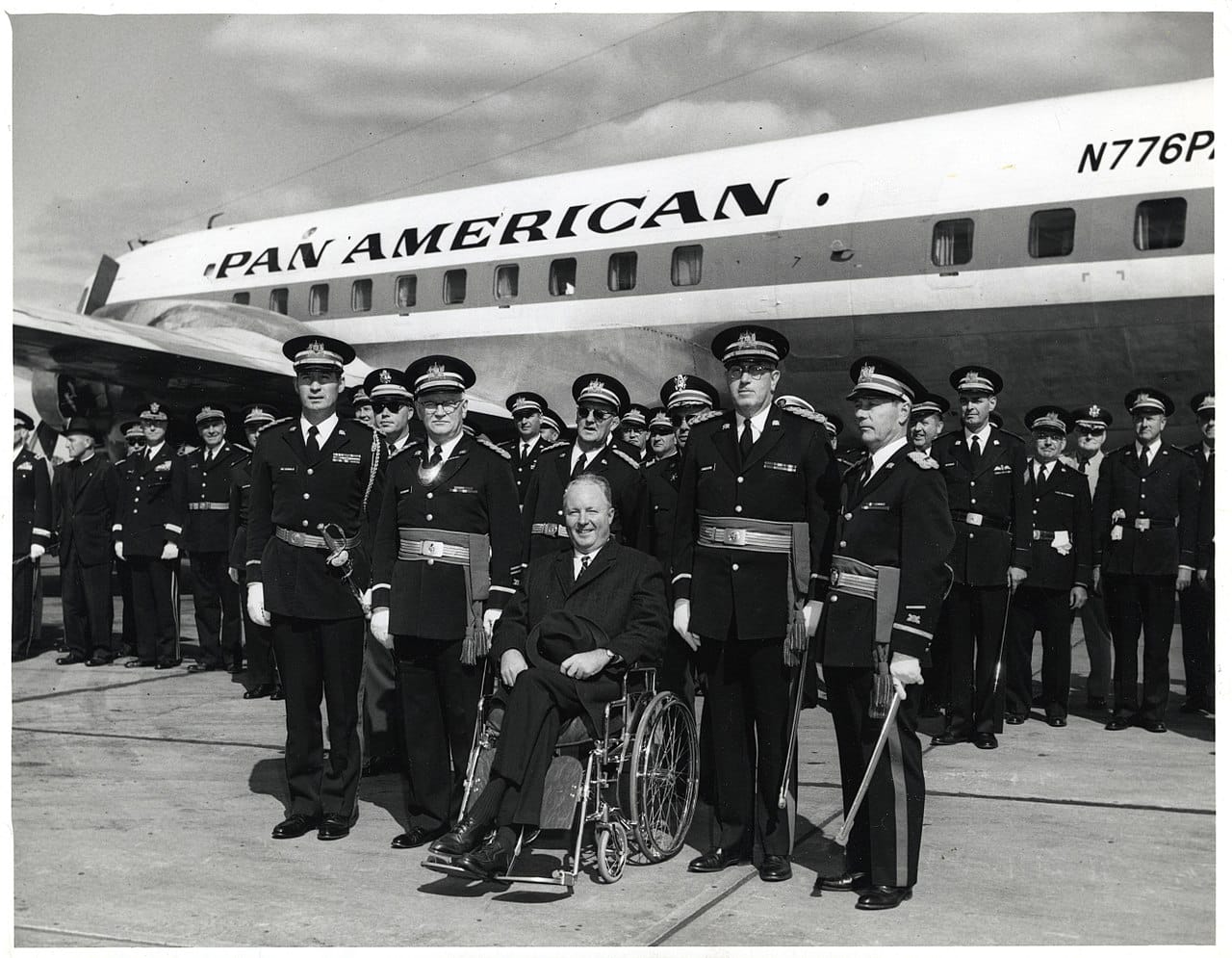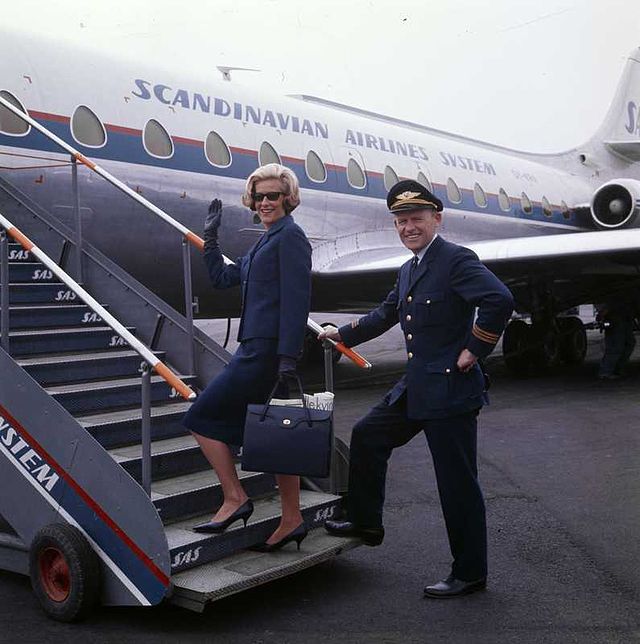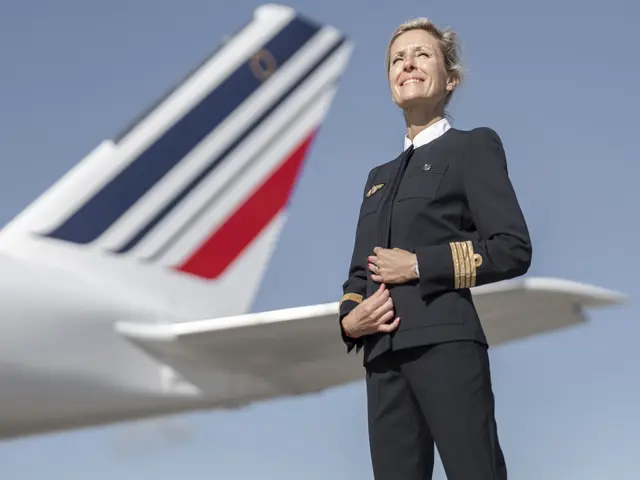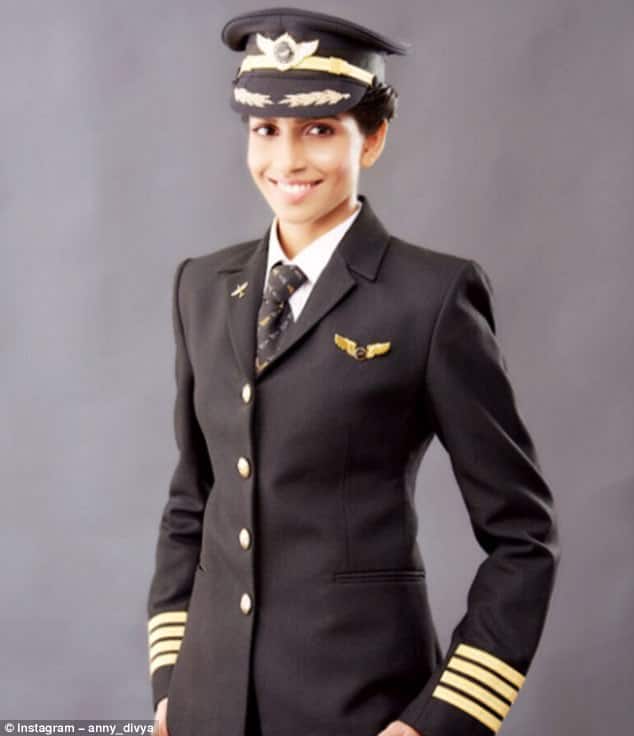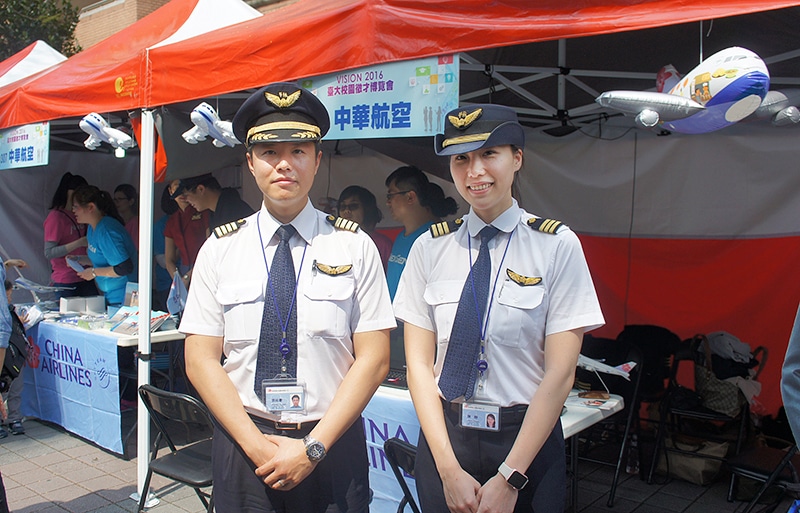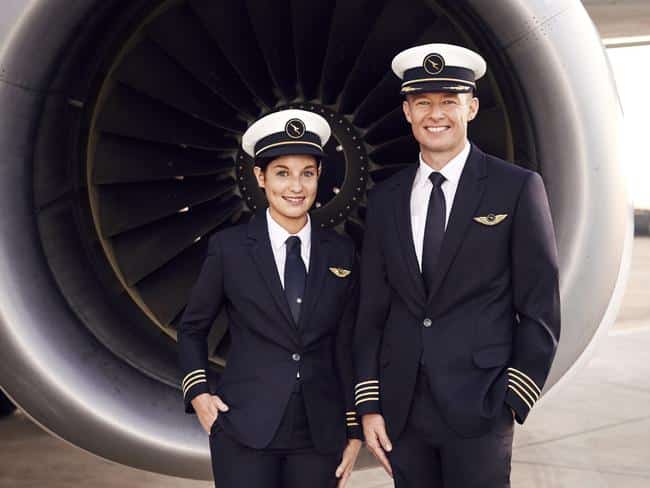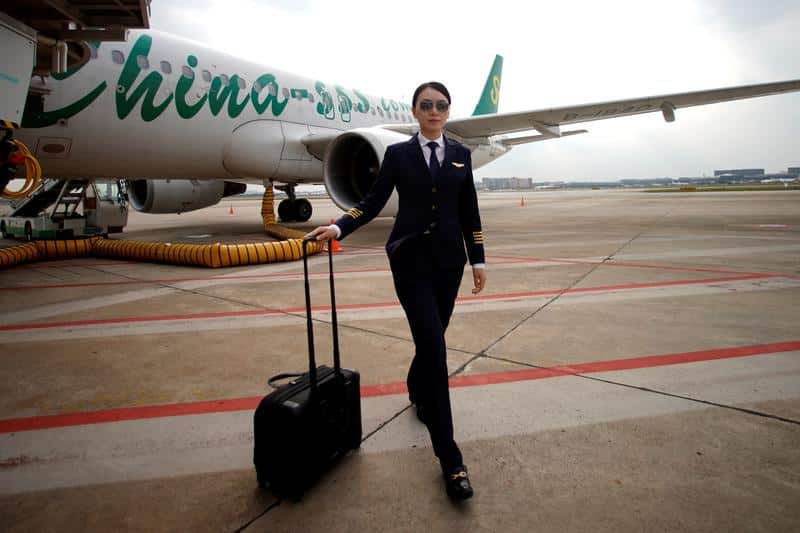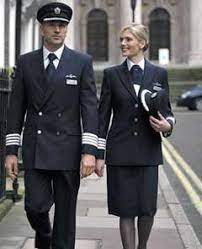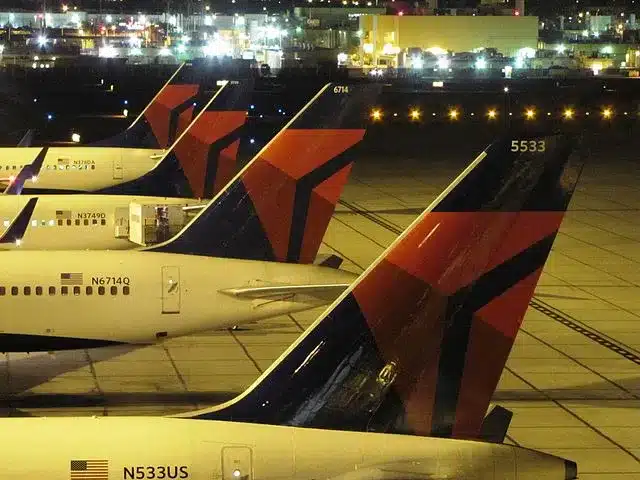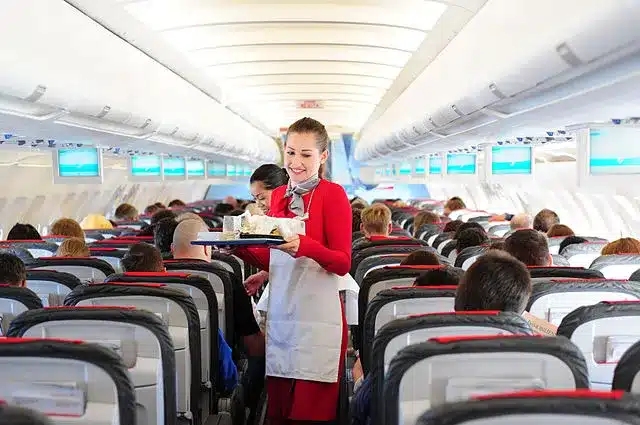Evolution of Pilot Uniforms: Tracing Progress and Inclusivity
The history of the Pilot Uniform is closely intertwined with naval traditions, adopted during the pioneering era of 1930s aviation.
Why? Post World War One, many of our first pilots were former combat aviators who brought their uniforms – and a sense of danger – with them. Understandably, this unnerved the fledgling travelling public.
Pan Am Clippers & Naval Captains
Pan American World Airways (Pan Am) – a trailblazer in commercial aviation with the Clipper seaplane boat services – decided to adopt the long-admired (and trusted) Naval Captain Uniform standard. Their “Clipper” aviation transportation aircraft, which revolutionized long-haul air travel, had their pilots don crisp, white (then black) tropical uniforms akin to naval dress-whites.
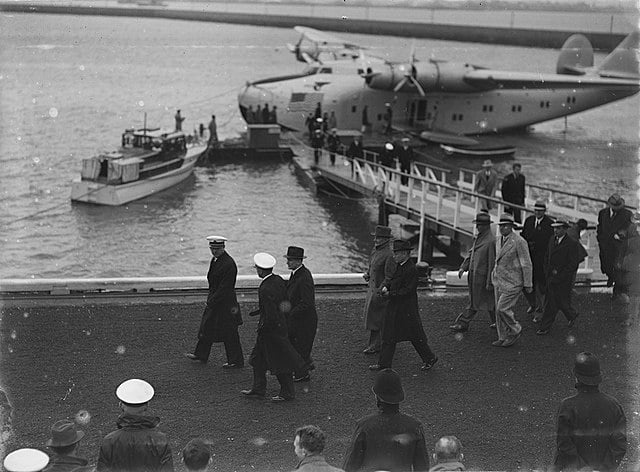
This Naval Captain choice exuded an image of reliability and sophistication. It became synonymous with the golden age of the aviation profession, but added a sense of nautical adventure. The pilot uniform history – rooted in naval traditions – is our showcase to the enduring legacy of aviation’s glamorous past. And why it remains almost unchanged to this day.
Why do we do this, you might ask?
Simple. After 9/11, Airlines locked and reinforced their cockpit doors. Because of this young girls and boys stopped visiting cockpits, therefore a blow was dealt to the inspiration of our next generation.
Flying connects us, but it should also inspire. The pilot uniform is the ultimate expression of commercial aviation. So lets flaunt it.
Uniform Design History
The iconic double-breasted, brass-buttoned blazers and hats exudes authority and professionalism from the seas to the skies. This naval standard has been adopted by every airline in the world.
Over the years, aviation attire has undergone significant changes. Reflecting evolving social norms, fashion trends, and gender equality in the aviation industry. In the early days of aviation, pilot uniforms were predominantly designed for men. When women pilots were a rarity. As more women entered aviation, uniform adaptations were necessary to accommodate style and shape.

Captain & Co-Pilot
In the mid-20th century, female pilots wore variations of male uniforms. With some airlines opting for skirts and dresses. However, as the role of women in aviation expanded, so did the need for gender-inclusive designs. Modern pilot uniforms embrace unisex styles, offering both male and female pilot standardized attire. With tailored blazers, trousers, or skirts, with consistent accessories and insignia.
Contemporary uniforms promote a unified image for all aviation employees. Regardless of gender or role. We need to celebrate the diverse contributions of men and women to the aviation industry. The evolution of the pilot uniform reflects the ongoing progress towards inclusivity and equal representation within the aviation community.
Pilot Uniform History in Pictures
1920
Pan Am Flyers
1926
RAF Empire Flying Service
1926
Atlantico Pacifico
1928
Inter-Island Airways
1930
Braniff Airlines
1930
United Airlines
1940
Delta Air Lines
1960
Delta Air Lines
1960
Pan Am
1964
Scandinavian Air Service
1976
Western Airlines
2017
Delta Air Lines
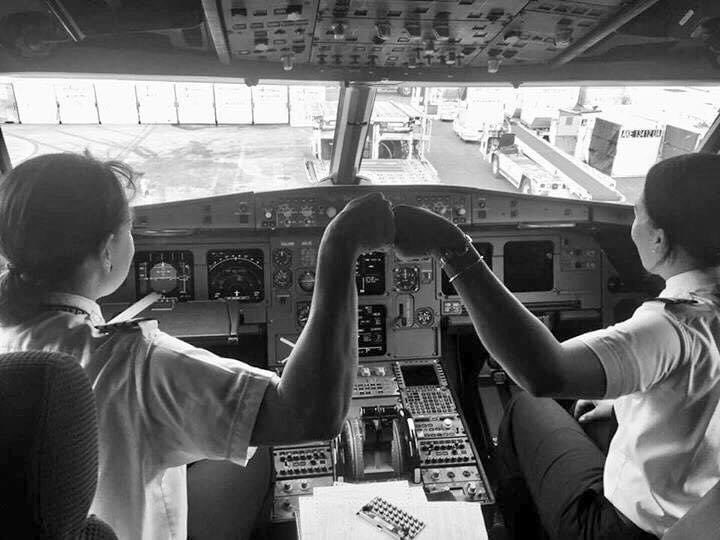

Pass the FAA Private Pilot test with flying colors. Achieve your dreams of flying an airplane.
Uniform insignia Explained
Shoulder Epaulets
Epaulets are one of the most common forms of pilot insignia and are worn on the shoulders of pilot uniforms. They typically feature stripes, bars, indicating the pilot’s rank. For example, a first officer might have two or three stripes, while a captain would have four stripes.
Wings
Pilot lapel wings are iconic symbols worn by aviators to signify their status as licensed pilots. The design of wings can vary based on factors like the type of aircraft flown (e.g., propeller planes, jets). Also military and the country or airline’s specific design.
Hat Badges
Some airlines use hat badges as a form of pilot insignia. These are decorative badges or pins worn on the pilot’s cap, often featuring the airline’s logo or other distinctive symbols.
Star Insignias
In some airlines, pilots wear star insignias on their uniforms to denote their rank or level of seniority. The number of stars corresponds to their position within the airline’s hierarchy.
Gold and Silver Insignias
Some airlines use gold and silver insignias to distinguish between various roles, such as senior captains, junior captains, first officers, or flight engineers
Unique Airline Emblems
Different airlines have their own unique insignias and symbols, often representing their brand identity or historical significance. Emirates Airlines uses golden wings with a red “Emirates” inscription for their pilots.
Embroidered Patches
In addition to traditional epaulets, some airlines use embroidered patches on the pilot’s uniform to indicate specific roles or qualifications. Such as being a check captain, instructor, or having expertise in a particular aircraft type.
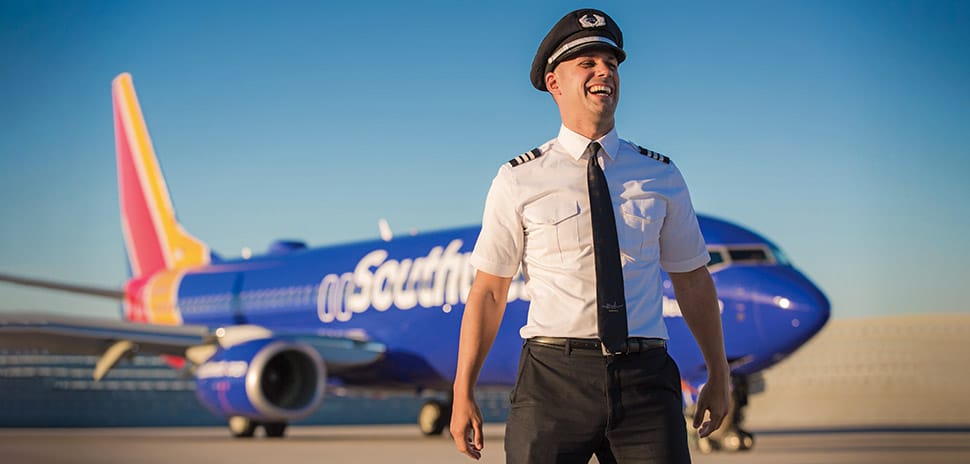
Stripes Explained : Airline Captain, First & Second Officer
The stripes on pilot blazers play a significant role in denoting rank and carry a parallel to naval rankings. Similar to how stripes on naval uniforms indicate the rank of officers, pilot uniforms use stripes to signify experience and senior pilots. In commercial aviation, senior pilots’ stripes are typically found on the sleeves of their blazers and also on their epaulets.
Originally, each stripe represented years of service, marking the flight crew’s level of expertise and authority.
Captain & First Officer
A pilot with three stripes indicates a first officer (or two for a second officer) or co-pilot, while four stripes would signify an airline captain. This system not only distinguishes the hierarchy within flight crews but also emphasizes the responsibility and experience held by those who bear the stripes. Mirroring the way naval rankings convey command and leadership at sea.
The tradition of using stripes on pilot blazers as a visual representation of rank adds to the professionalism and respect accorded to these skilled aviators, aligning with the longstanding practices seen in naval uniforms. It also acts as a visual reminder that some pilots are training or “checking” junior or trainee pilots “on the line”.
Female Uniform Changes : Equality
Over the years, several airlines have taken significant steps to accommodate the female shape in their uniform designs, addressing issues like fit, functionality, and style. Airlines like Qatar Airways, Emirates, and Air Canada have received praise for their efforts in creating tailored uniforms that celebrate the female form without compromising professionalism or comfort.
Aviation & Cotton
Sometimes these airlines have worked closely with top designers to develop contemporary and fashionable options. That cater to diverse body types, ensuring that female crew members feel confident and empowered while performing their duties. The emphasis on female fit in crew uniforms marks a positive stride towards gender equality in aviation. It fosters an inclusive environment where all crew members can express their individuality while representing their respective airlines.
Air France
Air India
China Airlines
Japan Airlines
Qantas Airlines
China Airlines
British Airways
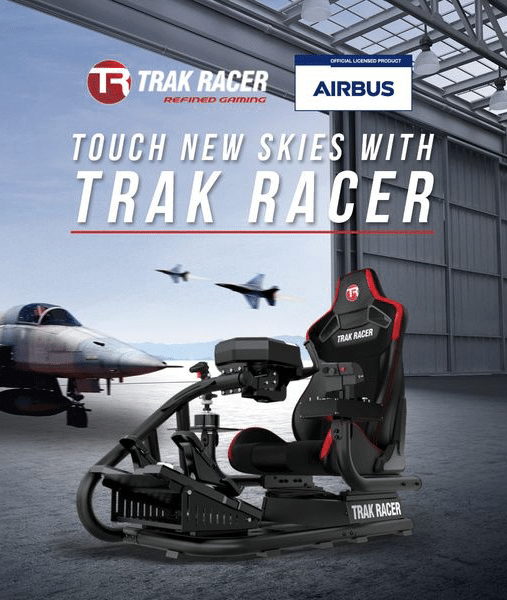
Get yourself in the sky today and feel what it’s like to be a pilot!
Pilot Uniform Design Goals
Uniform Color:
- The choice of uniform color plays a crucial role in defining an airline’s brand identity and the image it wishes to portray.
- Many airlines opt for classic colors like navy blue, black, or gray for a professional and timeless appearance, while others incorporate bold and vibrant hues to make a statement.
- Some carriers, like Lufthansa and Emirates, are known for their iconic and distinctive uniform colors, which have become synonymous with their brands.
Pilot Shirts:
- Pilot shirts are a fundamental part of the aviation uniform and come in various styles, including short-sleeved and long-sleeved options.
- Traditionally, pilot shirts were predominantly white, reflecting the military heritage of early aviation and emphasizing a crisp, clean look.
- In recent years, some airlines have introduced colored or patterned pilot shirts to add a modern touch to their uniforms while maintaining a professional appearance.
Pockets:
- Uniform breast pockets serve both functional and aesthetic purposes for pilots and flight attendants, providing a convenient place to carry essential items and adding design elements to the uniform.
- Pockets are often strategically placed on pilot shirts, blazers, and trousers, offering easy access to items like pens, notepads, or electronic devices during flights.
- Airlines may incorporate unique pocket designs and shapes, adding a distinctive touch to their uniforms and contributing to the overall visual appeal
Pilot Uniforms & Fashion Designers
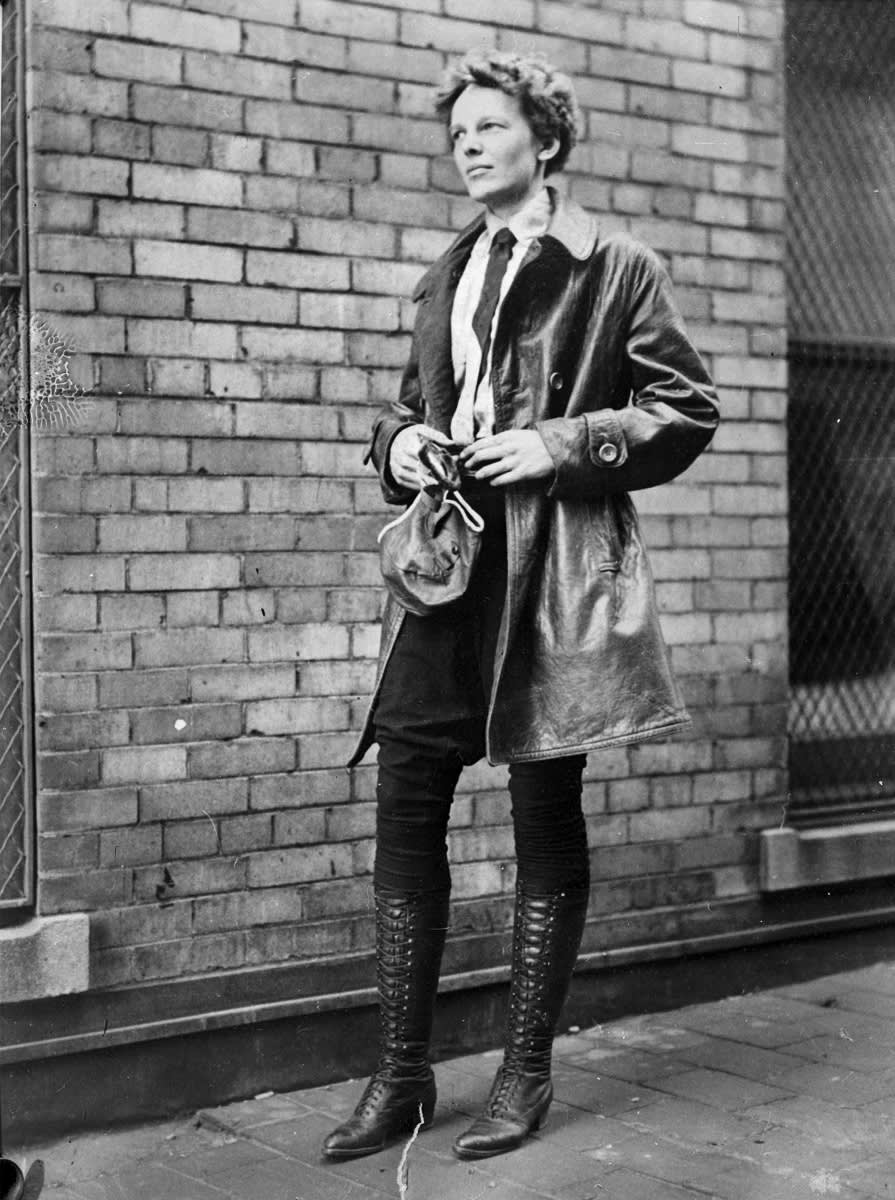
Amelia Earhart: While she was not a designer herself, Amelia Earhart, the pioneering aviator, had her own distinctive flight outfit, which became an iconic representation of early aviation fashion.
Edith Head: A renowned costume designer in Hollywood, Edith Head designed uniforms for several airlines in the mid-20th century, including American Airlines and TWA.
Howard Greer: Another influential Hollywood costume designer, Howard Greer, is known for creating uniforms for United Airlines during the 1930s.
Oleg Cassini: A prominent fashion designer, Oleg Cassini, designed uniforms for Trans World Airlines (TWA) in the 1970s.
Pierre Balmain: This esteemed French fashion designer was responsible for designing Air France uniforms in the 1970s.
Christian Lacroix: The famous French designer created uniforms for Air Inter in the 1980s, showcasing his unique and avant-garde style.
Julien Macdonald: A contemporary Welsh fashion designer, Julien Macdonald, designed a uniform collection for pilots for British Airways in the early 2000s.
Zac Posen: The American fashion designer Zac Posen designed uniforms for Delta Air Lines in 2018.
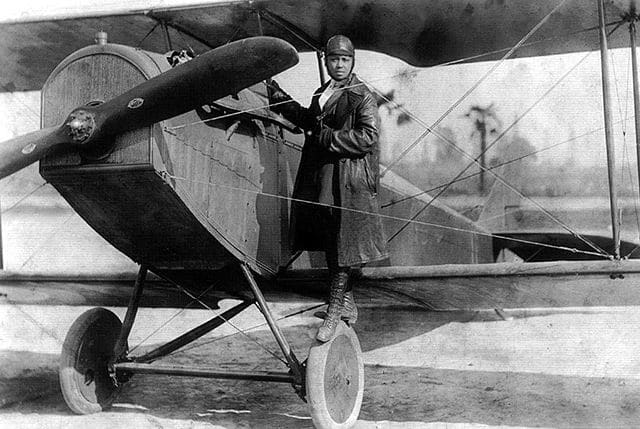
“The air is the only place free from prejudices.” – Bessie Coleman, the first African-American woman to become an airplane pilot, 1921
Rank of Airline Pilots
Student Pilot: Standard pilot-in-training uniform, usually comprising a basic flight suit or aviation coveralls.
Private Pilot: Often wears a casual aviation outfit, such as a pilot polo shirt or aviation-themed attire.
Commercial Air Pilot: Standard airline commercial pilot uniform, including a tailored pilot shirt with epaulets and aviation trousers or skirt.
First Officer (FO) or Co-Pilot: Similar to the captain’s uniform but may have slight distinctions in rank insignias or stripes.
Captain: Full captain’s uniform, which typically consists of a pilot’s jacket or blazer with four stripes, indicating their rank as captain.
Senior Captain: Similar uniform to the captain, but a senior captain may have additional insignias or distinctions denoting their higher seniority.
Check Captain or Check Airman: The same uniform as a captain, but with the designation of a check captain or check airman.
Chief Pilot: A chief commercial pilot may wear a captain’s uniform with additional identifiers or patches signifying their role as the highest-ranking time pilot in the airline or organization.
Training Captain or Training Pilot: Similar uniform to a captain, but may have additional identifiers as a training air pilot or instructor.
Line Captain: A line captain wears the standard captain’s uniform, representing their role as a captain regularly flying scheduled flights.
Special Thanks to Dawn Cook and Stephane Johnson of Delta Air Lines for the article title picture - repeated here. The first Female African American Flight Crew.
